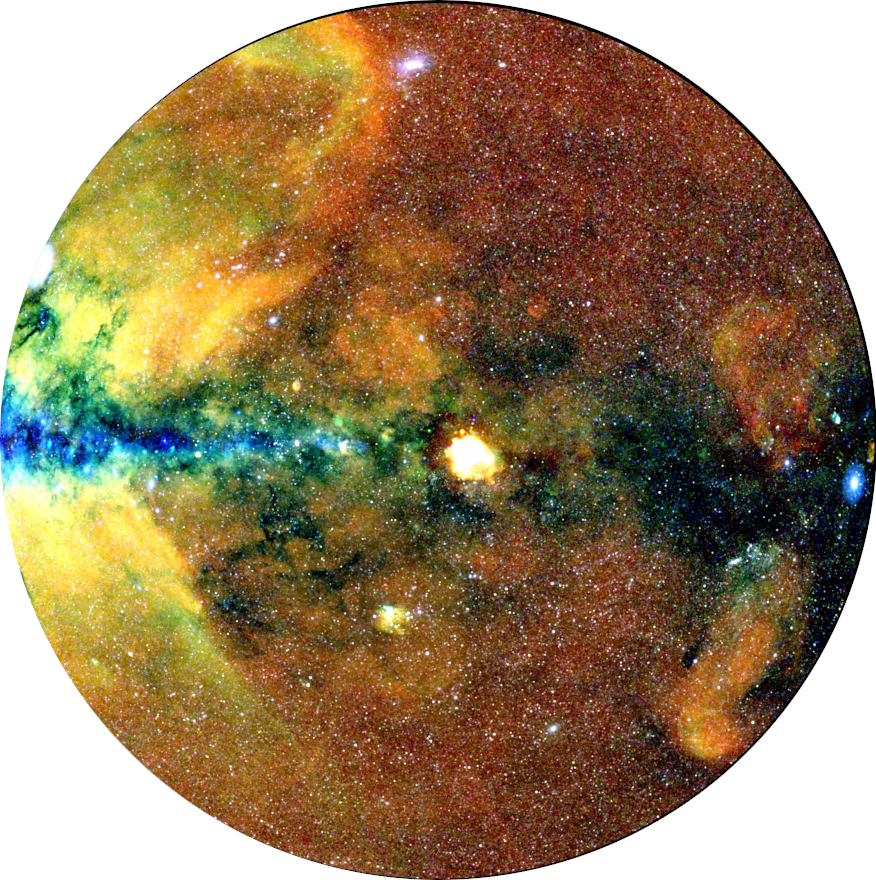
 Credit: MPE, J. Sanders for the eROSITA consortium
Credit: MPE, J. Sanders for the eROSITA consortium
The Astounding X-ray Sky
For six months starting in July, 1990, the Röntgen Satellite (or ROSAT), a German-UK-US X-ray observatory, performed the first survey of the entire sky in X-rays with an imaging X-ray camera. The ROSAT All-Sky Survey presented a quantum leap in our understanding of the high-energy Universe, revealing, for the first time, enormous bubbles of hot gas associated with our galaxy and beyond, supernova remnants, X-ray emitting clusters of galaxies, the emission of X-rays from planets and even comets, observing the moonshadow in the cosmic X-ray background, and discovering 150,000 X-ray sources (25 times more than all previous X-ray observatories combined). The ROSAT All-Sky Survey, or RASS, is still being studied by scientists more than 30 years after it was obtained. As important as the RASS was, it did have some technological limitations: the sky survy was limited in time, resulting in observations of only a few minutes over most of the sky; and it was limited in energy, covering only the low-energy emission. To build upon the incredible success of the RASS, scientists and engineers at the Max Planck Institute for Extraterrestrial Physics (MPE) in Germany, and their partner institutes, designed and built a new, advanced X-ray telescope called eROSITA. The eROSITA telescope has much better sensitivity than ROSAT had, and covers a much larger portion of the X-ray energy band. It was also designed to perform multiple surveys of the X-ray sky over a period of seven years. eROSITA was launched aboard the Spektr-RG spacecraft in July 2019, and completed its first 6-month survey in June 2020. On January 31, 2024, MPE released to the community data from this survey, called eRASS1 (shown above), covering one-half of the sky, consisting of more than 170 million individual X-ray photons from almost a million X-ray sources, including 710,000 active galaxies, 180,000 X-ray emitting stars in the Milky Way, 12,000 clusters of galaxies, diffuse hot bubbles, and other oddball sources known and unknown. These data will greatly extend our understanding of how the Universe formed and evolved, the history of black hole formation, how stellar feedback allows for the formation of organic compounds and life, and answers to a host of questions we cannot yet imagine. See for yourself!
Published: February 5, 2024
<
HEA Dictionary ● Archive
● Search HEAPOW
● Other Languages
● HEAPOW on Facebook
● Download all Images
● Education ● HEAD
>

Each week the HEASARC
brings you new, exciting and beautiful images from X-ray and Gamma ray
astronomy. Check back each week and be sure to check out the HEAPOW archive!
Page Author: Dr. Michael F. Corcoran
Last modified Monday, 26-Feb-2024 17:34:58 EST


